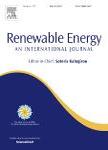版权所有:内蒙古大学图书馆 技术提供:维普资讯• 智图
内蒙古自治区呼和浩特市赛罕区大学西街235号 邮编: 010021

作者机构:Macquarie Univ Sch Engn Sydney NSW 2109 Australia Flinders Univ S Australia Coll Sci & Engn Tonsley SA 5042 Australia
出 版 物:《RENEWABLE ENERGY》 (Renew. Energy)
年 卷 期:2025年第241卷
核心收录:
学科分类:0820[工学-石油与天然气工程] 080703[工学-动力机械及工程] 08[工学] 0807[工学-动力工程及工程热物理]
主 题:Battery energy storage system Hydrogen storage Hybrid energy system Levelized cost of electricity Levelized cost of hydrogen Metaheuristic optimization algorithms Renewable energy resources
摘 要:This research work investigates the techno-economic feasibility and optimal design of stand-alone hybrid energy systems (HESs) for electricity and hydrogen production in a remote Australian community. It evaluates three configurations - PV/BESS, PV/FC/EL/HT, and PV/BESS/FC/EL/HT - incorporating photovoltaic (PV) panels, battery energy storage systems (BESS), fuel cells (FC), electrolyzers (EL), and hydrogen tanks (HT). The systems are assessed based on net present cost (NPC), levelized cost of electricity (LCOE), and levelized cost of hydrogen (LCOH), utilizing advanced metaheuristic optimization algorithms and HOMER Pro simulations. The PV/BESS configuration demonstrates the lowest NPC ($888,833) and LCOE ($0.2903/kWh), making it the most cost-effective for electricity generation, but it proves inefficient in utilizing renewable energy due to 54% excess electricity. The PV/FC/EL/HT system emerges as the optimal hydrogen-integrated configuration, achieving an NPC of $964,440.97, an LCOE of $0.3326/kWh, and an LCOH of $6.0264/kg using the cuckoo search algorithm (CSA). Although the PV/BESS/FC/EL/HT configuration offers enhanced operational flexibility, its higher costs, with an NPC of $1,388,303 and LCOH of $8.90/kg, limit its economic competitiveness. Optimization algorithms, particularly CSA, consistently outperform HOMER Pro by achieving up to 20% reductions in NPC and 12% in LCOE through optimized component sizing and interactions. Trade-offs appear with the harmony search algorithm (HSA), which prioritizes hydrogen production and renewable energy utilization at significantly higher costs. The sensitivity analysis reveals that reducing FC and EL capital costs by 50% decreases NPC by 78.64% and LCOE/LCOH by 45.46%, while a 15% increase in solar irradiation reduces NPC by 18% and LCOE/LCOH by 4.08% and 3.72%, respectively. Longer project lifetimes and lower discount rates significantly improve unit cost metrics, with lower financing costs emerging as critical for a